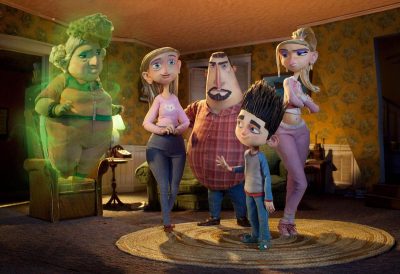LAIKA’s latest 3D stop-motion animated film ParaNorman opened this past weekend. Here’s a quick glance at some of the tech LAIKA used to make the Chris Butler and Sam Fell-directed film possible.
Cameras
To film most of the principal animation, LAIKA used 63 Canon 5D Mark II cameras fitted with left and right sliders to capture stereo pair frames. Also, the production relied on 53 motion control systems made up of 36 Kuper systems and 17 proprietary systems, and 21 motion control track and boom rigs. The camera department generated 20 hours, 29 minutes of footage (which amounts to 1,770,601 frames).
Puppets
3D color printers created the replacement faces for the film’s puppets, based on Maya and ZBrush elements. This meant that 31,000 individual face parts could be printed in order to achieve the expressions required. The rapid prototyping for the faces was a 10-step process with 5-6 hours of cleaning and coating, and the faces made up 1,257 archival boxes. There were 178 individual puppets created for the film’s 61 characters (the main character Norman had 28 individual full body puppets and more than 8,000 faces).
Visual effects

Although the film is of course stop motion, many scenes were enhanced with digital visual effects work. This ranged from rig removal, set extensions, ghost effects, atmospherics, crowds and face replacement line removal. It was also a film that LAIKA experimented somewhat with The Foundry’s KATANA in their lighting pipeline, and will be embracing it fully on their next production.
fxguide spoke recently to LAIKA about the adoption of KATANA, which aided in lighting lookdev, something that was not necessarily a push to photo-realism on a stop-motion animated film like ParaNorman. “You might be trying to match a texture or an effect on stage,” says director, production technology Jeff Stringer, who gives an example of making clouds look like that were created with gauze or cotton. “But we have a lot more time and control than most productions in terms of time on stage. The pace of stop motion is a benefit to visual effects in a way.”
Images and clip copyright © 2012 Focus Features.

Pingback: Animation History research_Stop motion – Vicky's Animation Blog